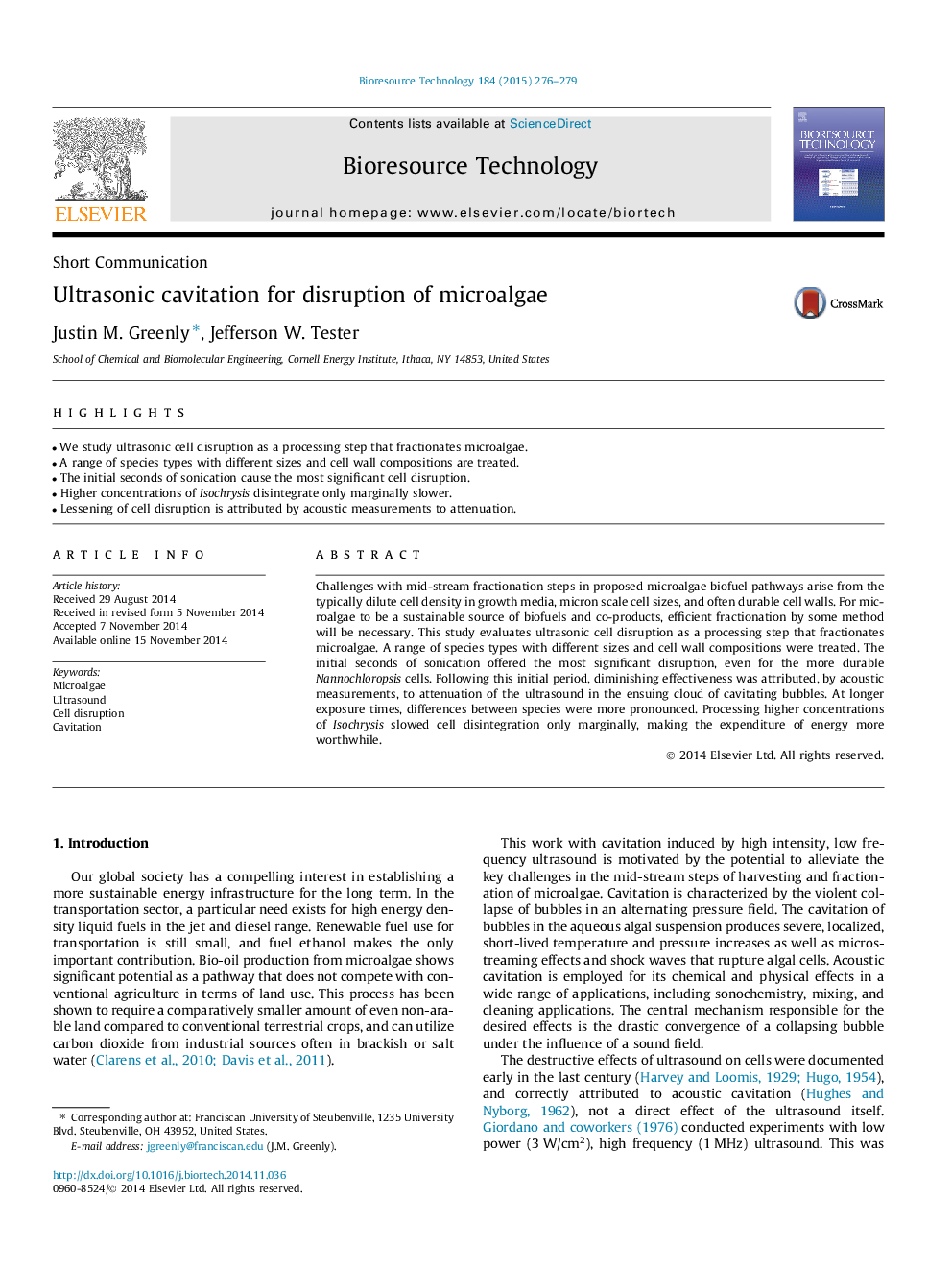| Article ID | Journal | Published Year | Pages | File Type |
|---|---|---|---|---|
| 679931 | Bioresource Technology | 2015 | 4 Pages |
•We study ultrasonic cell disruption as a processing step that fractionates microalgae.•A range of species types with different sizes and cell wall compositions are treated.•The initial seconds of sonication cause the most significant cell disruption.•Higher concentrations of Isochrysis disintegrate only marginally slower.•Lessening of cell disruption is attributed by acoustic measurements to attenuation.
Challenges with mid-stream fractionation steps in proposed microalgae biofuel pathways arise from the typically dilute cell density in growth media, micron scale cell sizes, and often durable cell walls. For microalgae to be a sustainable source of biofuels and co-products, efficient fractionation by some method will be necessary. This study evaluates ultrasonic cell disruption as a processing step that fractionates microalgae. A range of species types with different sizes and cell wall compositions were treated. The initial seconds of sonication offered the most significant disruption, even for the more durable Nannochloropsis cells. Following this initial period, diminishing effectiveness was attributed, by acoustic measurements, to attenuation of the ultrasound in the ensuing cloud of cavitating bubbles. At longer exposure times, differences between species were more pronounced. Processing higher concentrations of Isochrysis slowed cell disintegration only marginally, making the expenditure of energy more worthwhile.
